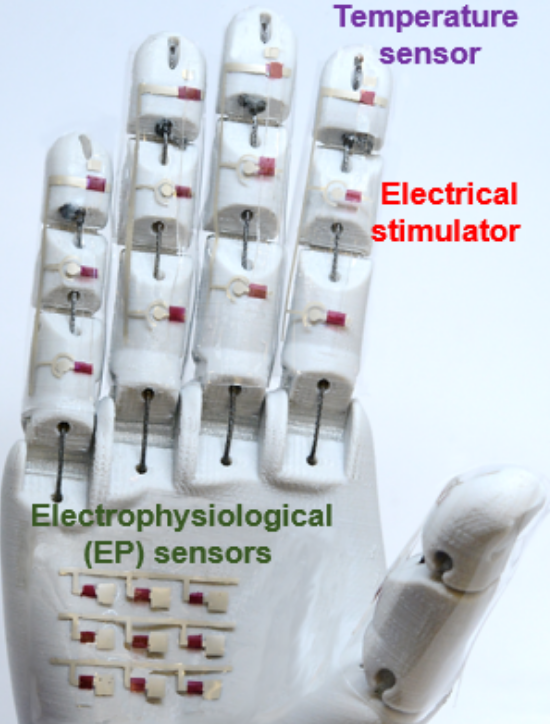Sep 17 2020
With the help of a medical robotic hand, doctors can now diagnose and treat people more precisely from halfway across the globe. However, the current generation of technologies is not sufficiently enough to match the in-person experience.
 A medical robotic hand is just one potential application for the rubbery electronics reported by researchers. Image Credit: University of Houston.
A medical robotic hand is just one potential application for the rubbery electronics reported by researchers. Image Credit: University of Houston.
Scientists have designed and created a smart electronic skin and a novel medical robotic hand that can assess vital diagnostic data by utilizing a recently invented rubbery semiconductor with high carrier mobility. The study has been published in the Science Advances journal.
Cunjiang Yu, Bill D. Cook Associate Professor of Mechanical Engineering at the University of Houston (UH) and the study’s corresponding author, stated that the rubbery semiconductor material can also be scaled easily for manufacturing purposes, based on the assembly at the air-water interface.
This interfacial assembly as well as the rubbery electronic devices explained in the article recommended a method toward soft, stretchy rubbery electronics and integrated systems that imitate the mechanical softness of biological tissues and are appropriate for a range of emerging applications, stated Yu, who is also the principal investigator at the Texas Center for Superconductivity at the University of Houston.
The medical robotic hand and the smart skin are just two promising applications developed by the scientists to demonstrate the discovery’s utility.
Besides Yu, the study’s authors include Ying-Shi Guan, Anish Thukral, Kyoseung Sim, Xu Wang, Yongcao Zhang, Faheem Ershad, Zhoulyu Rao, Fengjiao Pan, and Peng Wang, all of whom are affiliated with the University of Houston. The study’s co-authors Jianliang Xiao and Shun Zhang are affiliated with the University of Colorado.
Conventional semiconductors are fragile and using them in otherwise flexible electronics has involved unique mechanical accommodations. Former stretchable semiconductors have had their own disadvantages, such as low carrier mobility—the rate at which charge carriers can travel via a material—and complex fabrication needs.
In 2019, Yu and colleagues reported that carrier mobility can be improved by adding small amounts of metallic carbon nanotubes to the rubbery semiconductor of P3HT, a polydimethylsiloxane composite. Such enhanced carrier mobility controls the performances of semiconductor transistors.
Yu added that the novel scalable manufacturing technique meant for such high performance stretchable semiconducting nanofilms and the creation of completely rubbery transistors represent a major step forward.
According to Yu, the production is quite easy. A semiconductor material available in the market is dissolved in a solution and immersed in water, where it spreads—the chemical solvent evaporates from the solution, leading to enhanced semiconductor properties.
Yu added that this is a new method for making high-quality composite films, enabling reliable production of fully rubbery semiconductors.
The researchers reported that the electrical performance is maintained even when the semiconductor is expanded by 50%. The potential to stretch the rubbery electronics by 50% without affecting the performance is indeed a remarkable development, Yu added. Human skin can be stretched only around 30% without tearing, he concluded.
Journal Reference
Guan, Y-S., et al. (2020) Air/water interfacial assembled rubbery semiconducting nanofilm for fully rubbery integrated electronics. Science Advances. doi.org/10.1126/sciadv.abb3656.